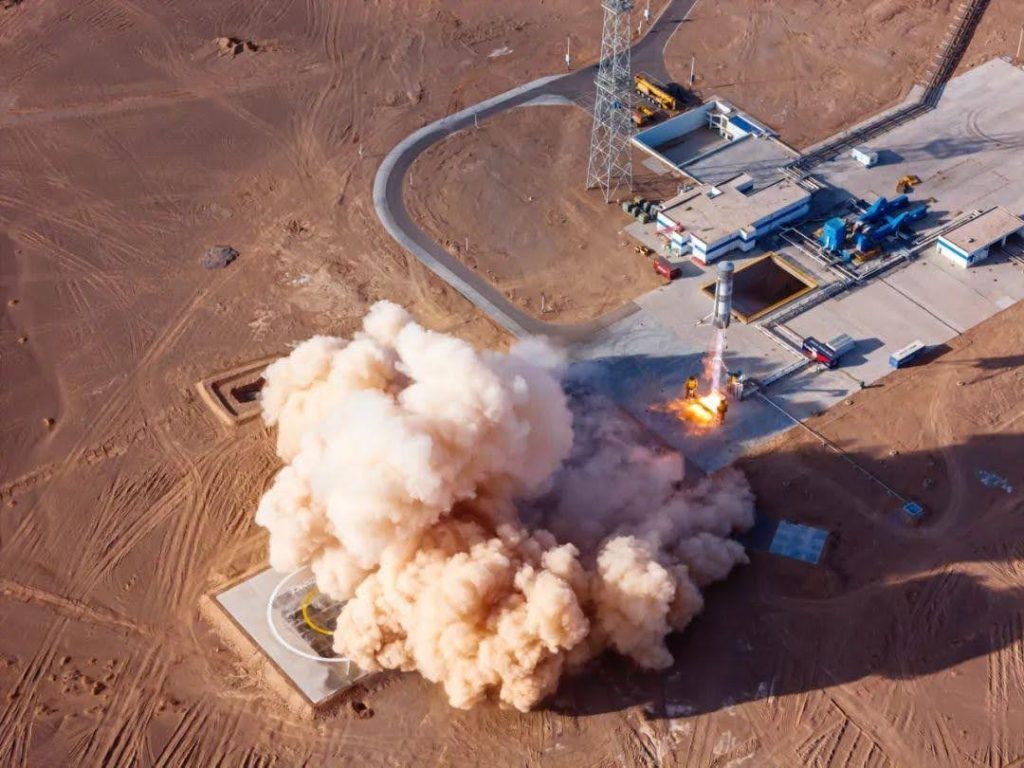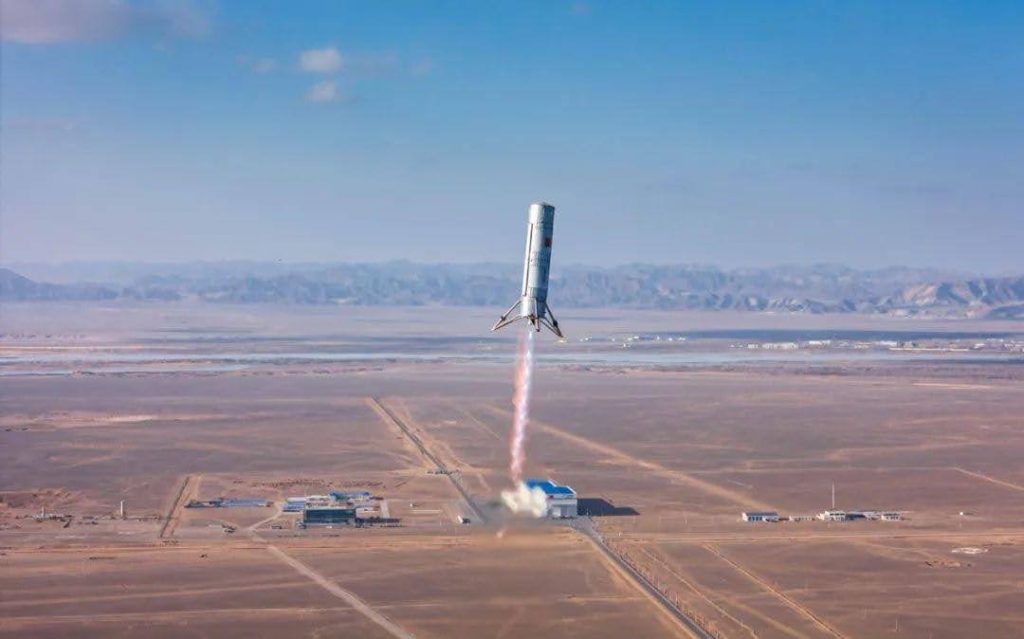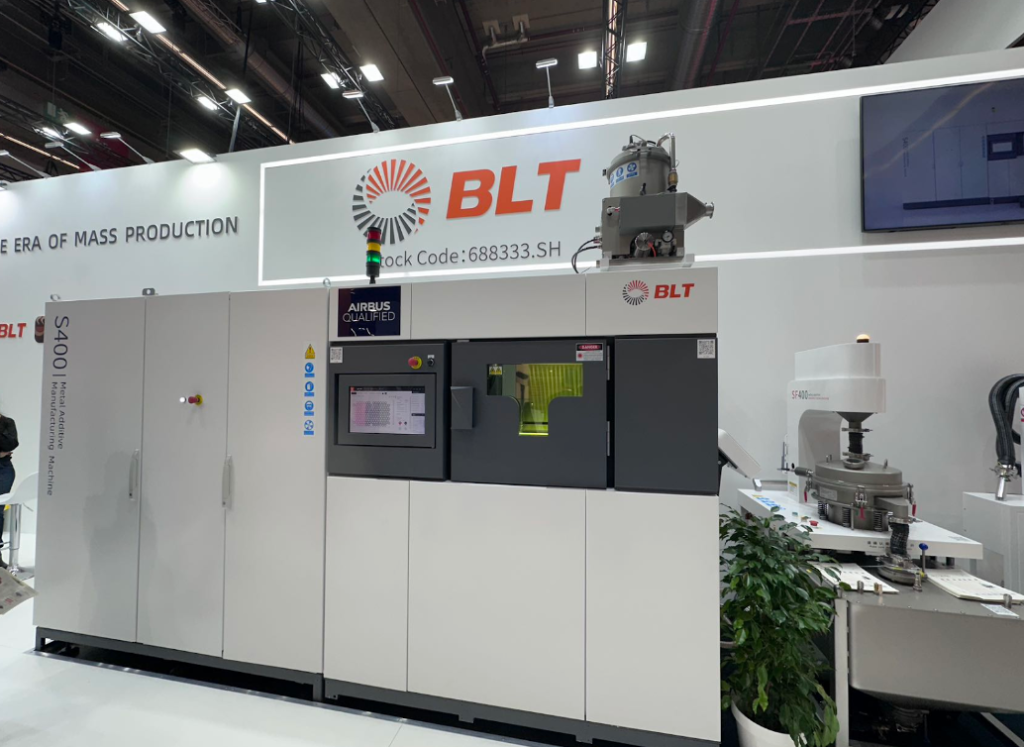Private Chinese space company LandSpace has completed the first successful test launch and landing of its reusable Zhuque-3 VTVL-1 rocket.
The “hop” test mission validated the company’s scheme for its vertical takeoff and landing (VTVL) Liquid Oxygen-Methane rocket’s first stage. Lifting off from Jiuquan Satellite Launch Center, the stainless steel rocket reached an altitude of around 350 meters in 60 seconds before setting back down on a designated landing area.
According to LandSpace, the test achieved a landing speed of around 0.75m/second, and landing accuracy of 2.4m.
Metal 3D printing technology from Bright Laser Technologies (BLT) reportedly played a key role in the production of the rocket, which features a slew of 3D printed components. These include joint elements, igniter mounts, and its intricate free-body section.
According to LandSpace, BLT 3D printing allowed the firm to reduce production time, expedite deliveries, and support rapid development iterations.
“To better meet the technical demands of our engine, we chose metal 3D printing technology for the production of critical components with exacting quality standards,” a spokesperson from LandSpace commented.
“Recognizing BLT as a frontrunner in additive technology solutions, and excelling in metal 3D printing services, equipment, and powders, we decided to cooperate with BLT.”

First successful test for Zhuque-3 VTVL-1 rocket
The successful recovery test reportedly validated the compatibility of the rocket’s control system with engine thrust adjustment characteristics, the accuracy of the guidance and control system, and the reliable performance of the rocket’s soft landing cushioning mechanism.
Made from stainless steel, the trial rocket has a height of 18.3 meters and a diameter of 3.35 meters. The Zhuque-3 VTVL-1 was powered by a Tianque-12 methalox engine, which has undergone ground-based testing for more than 100,000 seconds. Methalox is a rocket propellant formed of a mixture of liquid oxygen and methane.
The development of the Zhuque-3 rocket was first announced in November 2023. Based on the success of the first test, LandSpace will conduct a test flight reaching an altitude of 10 km later this year to further verify its key components. LandSpace hopes to achieve its first full launch of the rocket in 2025.
The complete two-stage rocket will measure 4.5 meters in diameter, and have a total length of 76.6 meters. Set to have a mass of 660 tons at liftoff, the rocket will be powered by nine Tianque-12B engines.

BLT 3D printing boosts VTVL rocket
LandSpace’s collaboration with BLT began back in 2019, when the firm first recognized the benefits offered by additive manufacturing in production of Liquid Oxygen-Methane rocket components.
During development of the Zhuque-3 VTVL-1, BLT utilized its metal 3D printing technology to manufacture intricate components within the engine. These components feature intricate and unconventional structures which would pose challenges for traditional manufacturing methods. Such challenges include prolonged production cycles, difficulties in mold manufacturing, and high costs.
One notable rocket component expedited by 3D printing was the free body section, which features a complex internal cooling structure. According to BLT, conventional manufacturing methods struggled to meet production demands, and failed to meet the overall quality requirements of the part.
Leveraging 3D printing, the team was able to integrate the complex cooling structure into the free body design. This is said to have enabled superior part performance, and prevents erosion of the combustion chamber casing.
BLT-S310 and BLT-S400 systems were used to 3D print the rocket’s components. BLT delivered a batch of high-quality components to LandSpace on schedule. These parts underwent rigorous client validation and played a key role in the rocket’s successful launch.

Rocket development leveraged metal AM
In a recent survey on the 3D printing trends to watch out for in 2024, 3D printing experts highlighted the growing adoption of additive manufacturing in the aerospace sector.
This is not the first time BLT metal 3D printing has been leveraged in Chinese rocket development. Previously, the company has assisted commercial clients i-Space in developing and 3D printing key aerospace components. At Formnext 2023, BLT exhibited a 3D printed thrust chamber injector for i-Space’s JD-2 100-ton liquid oxygen methane engine.
Additionally, Chinese aerospace firm Orienspace has previously leveraged multiple BLT systems to 3D print over 30 components for its Gravity-1 Y-1 commercial carrier rocket. The 3D printed rocket parts reportedly exhibited high consistency, and met the strict requirements for the Gravity-1’s commercial launch.
Elsewhere, it was announced last year that Edinburgh-based private rocket manufacturer Skyrora had begun full-duration testing to qualify its 70kN 3D printed rocket engine.
The company’s Skyprint 2 3D printers were used to 3D the components, reportedly cutting production times by 66% and costs by 20%. The engine design will be used in the company’s first commercial orbital launch, and features a 3D printed cooling chamber which will extend the engine’s life cycle.
Subscribe to the 3D Printing Industry newsletter to keep up to date with the latest 3D printing news. You can also follow us on Twitter, like our Facebook page, and subscribe to the 3D Printing Industry Youtube channel to access more exclusive content.
Are you interested in working in the additive manufacturing industry? Visit 3D Printing Jobs to view a selection of available roles and kickstart your career.
Featured image shows VTVL-1 Ignition Takeoff. Photo via LandSpace.

